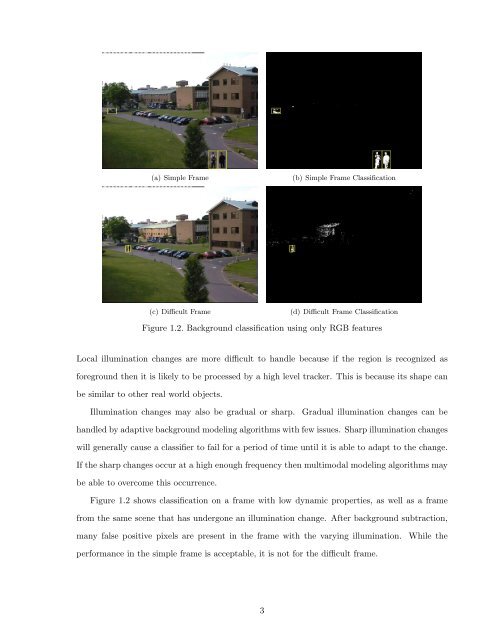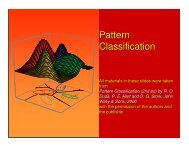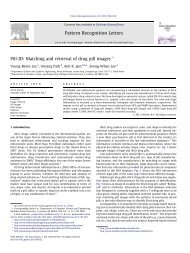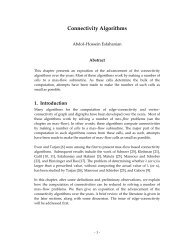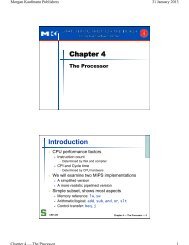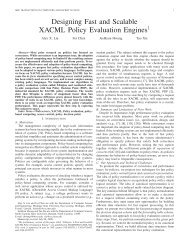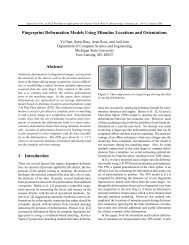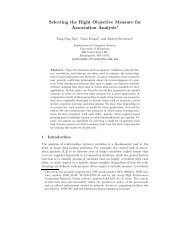Background Subtraction Using Ensembles of Classifiers with an ...
Background Subtraction Using Ensembles of Classifiers with an ...
Background Subtraction Using Ensembles of Classifiers with an ...
You also want an ePaper? Increase the reach of your titles
YUMPU automatically turns print PDFs into web optimized ePapers that Google loves.
(a) Simple Frame(b) Simple Frame Classification(c) Difficult Frame(d) Difficult Frame ClassificationFigure 1.2. <strong>Background</strong> classification using only RGB featuresLocal illumination ch<strong>an</strong>ges are more difficult to h<strong>an</strong>dle because if the region is recognized asforeground then it is likely to be processed by a high level tracker. This is because its shape c<strong>an</strong>be similar to other real world objects.Illumination ch<strong>an</strong>ges may also be gradual or sharp.Gradual illumination ch<strong>an</strong>ges c<strong>an</strong> beh<strong>an</strong>dled by adaptive background modeling algorithms <strong>with</strong> few issues. Sharp illumination ch<strong>an</strong>geswill generally cause a classifier to fail for a period <strong>of</strong> time until it is able to adapt to the ch<strong>an</strong>ge.If the sharp ch<strong>an</strong>ges occur at a high enough frequency then multimodal modeling algorithms maybe able to overcome this occurrence.Figure 1.2 shows classification on a frame <strong>with</strong> low dynamic properties, as well as a framefrom the same scene that has undergone <strong>an</strong> illumination ch<strong>an</strong>ge. After background subtraction,m<strong>an</strong>y false positive pixels are present in the frame <strong>with</strong> the varying illumination.While theperform<strong>an</strong>ce in the simple frame is acceptable, it is not for the difficult frame.3


